
No typical clinical signature; variable serology; 10% atypical lymphocytes. Here, read more about the essentials in detection and treatment of EBV infection.

No typical clinical signature; variable serology; 10% atypical lymphocytes. Here, read more about the essentials in detection and treatment of EBV infection.
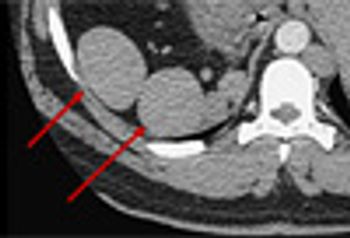

Clostridium difficile infection is a serious, life-threatening nosocomial infection that can follow on the heels of broad-spectrum antibiotic use. It affects over 500,000 Americans annually, with 15,000 deaths. Infection recurs in 15% to 25% of those initially treated successfully; infection subsequently redevelops in 40% to 50% of those an initial recurrence.

Like other chronic inflammatory conditions, inflammatory bowel disease (IBD) has been revolutionized by the advent of biologic agents that fundamentally alter the inappropriate inflammatory response. The most potent of these are the biologic agents, infliximab, adalimumab, certolizumab pegol, and natalizumab. They also have the most dangerous side-effect profile.
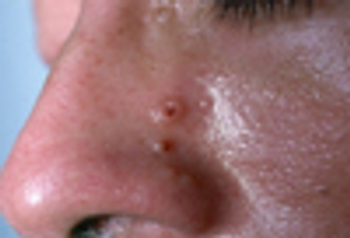
A 38-year-old openly homosexual man presented with cough and multiple asymptomatic skin lesions on his face.
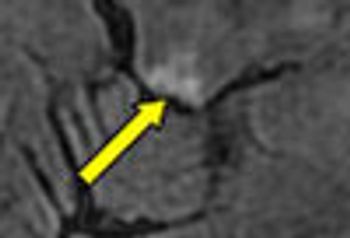

Here: Ted Rosen, MD, presents 5 tips about 5 skin disorders that you might not know.
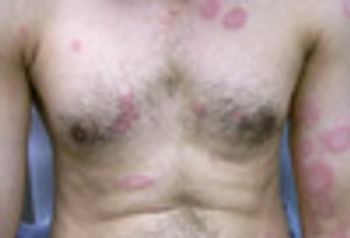
Here: Ted Rosen, MD, presents 5 tips about 5 skin disorders that you might not know.

A 38-year-old man presented with a 2-week history of mental status changes and impaired memory. He also had a rash on both hands and feet that had been getting worse for the past few months.
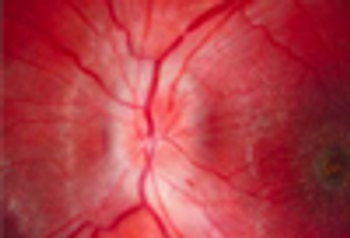
A 17-year-old sexually active young woman presented with sudden loss of vision in the left eye 2 weeks before presentation.

A 56-year-old man has been admitted on several prior occasions for left groin abcesses related to injection drug use.

During the past year, a 48-year-old man has had joint pain as well as this worsening rash on his hands. He is a construction worker, and he attributes the symptoms to his occupational exposure.

Here's a tip for dealing with patients who are hard of hearing and either don't have hearing aids or don't have them in at the time, usually while they are inpatients in the hospital. Take your stethoscope and let them wear the earpieces.
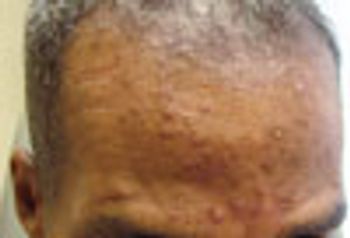
This HIV-positive, 48-year-old man presented with new-onset acne-like, pruritic lesions on his face. These erythematous painful papules had developed 2 months before presentation. The patient was taking antiretrovirals and trimethoprim/sulfamethoxazole for the HIV infection.
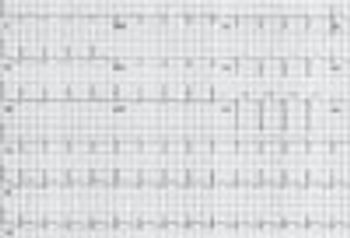
A 50-year-old man was brought to the emergency department (ED) after a witnessed syncopal event. He was awake but confused and unable to provide a history.
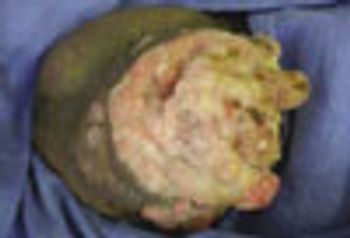
For 20 years, a lesion has been slowly growing on the penis of a 51-year-old man. He has noted bleeding and a foul-smelling discharge from the mass. Recently, the patient experienced a 30-lb weight loss. He has had 5 sex partners in his lifetime but has been monogamous for the past year.

Chronic fatigue syndrome (CFS) is a distinct disorder characterized by debilitating and often recurrent fatigue that lasts at least 6 months but more frequently lasts for longer periods. Patients with CFS experience overall physical, social, and mental impairments and may subsequently qualify for medical disability.

A 41-year-old woman presents to the emergency department with chest pain and dysphagia. Routine laboratory studies reveal profound neutropenia. She denies recent fever, chills, or weight loss.

Chronic kidney disease (CKD) has become a burgeoning epidemic. Patients with various stages of CKD initially seek care from their primary care physician; some of these patients sustain acute, reversible renal injuries as well.
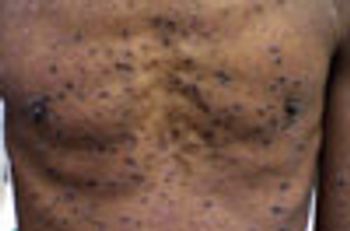
A 37-year-old man presented to the emergency department with painful, burning, blistering skin lesions. The lesions started 3 days earlier on the face and spread to the trunk and extremities. Ten days before presentation, the patient had received a diagnosis of AIDS.
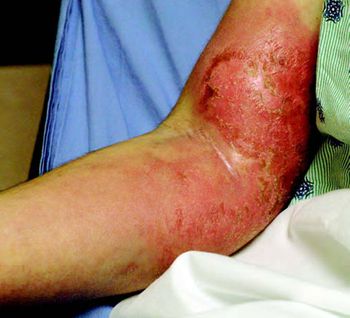
For 3 days, a 28-year-old woman with a history of polymyositis and possible dermatomyositis had fever, chills, and nonproductive cough. She complained of rash, joint pain, and progressive immobility because of severe muscle weakness. For the past 6 years, she had been taking prednisone (60 mg/d), hydroxychloroquine (200 mg bid), and tramadol (100 mg q6h prn for pain).
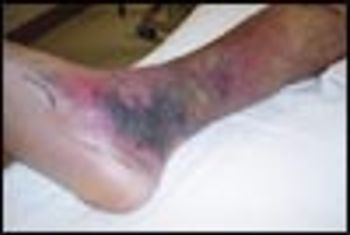
A 69-year-old man with stage II chronic kidney disease due to hypertension fell from his bicycle and presented to the emergency department (ED) with abrasions, ecchymoses, and a 3-cm laceration on his right leg. The patient was an avid cyclist. His wounds were cleaned and the laceration sutured. There were no fractures, and the patient was discharged home.

This year's influenza season is approaching fast. Although the World Health Organization officially declared an end to the 2009 H1N1 influenza pandemic in August, the H1N1 virus is still circulating and is likely to continue to cause serious disease in infants, young children, pregnant women, and other high-risk groups.
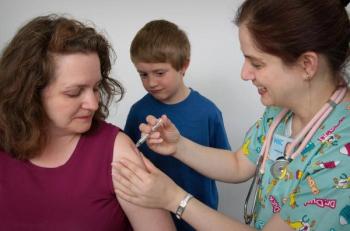
This year’s influenza season is approaching fast. Although the World Health Organization officially declared an end to the 2009 H1N1 influenza pandemic in August, the H1N1 virus is still circulating and is likely to continue to cause serious disease in infants, young children, pregnant women, and other high-risk groups.

A previously healthy 19-year-old woman presents with a sore throat that has become progressively more painful over the course of 1 week. She also has left-sided neck swelling, light-headedness, and intermittent headaches. She denies recent sexual activity.